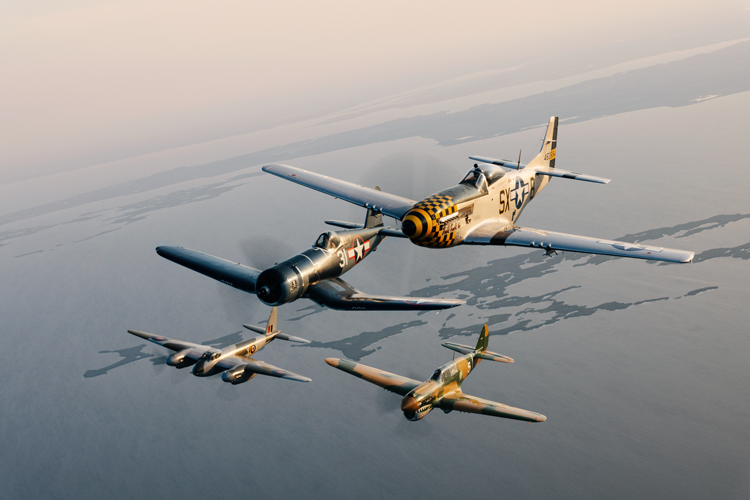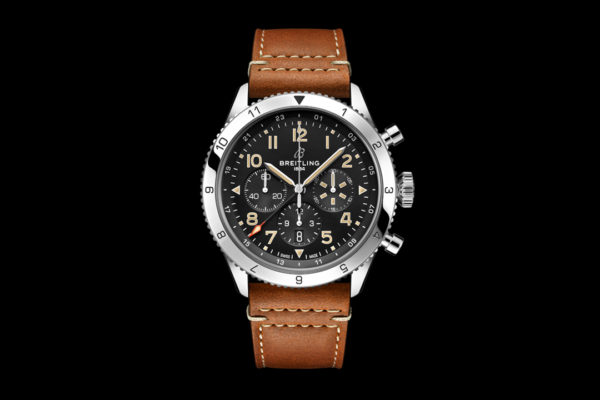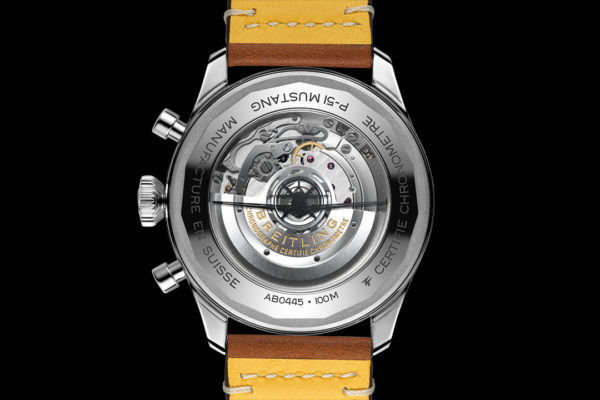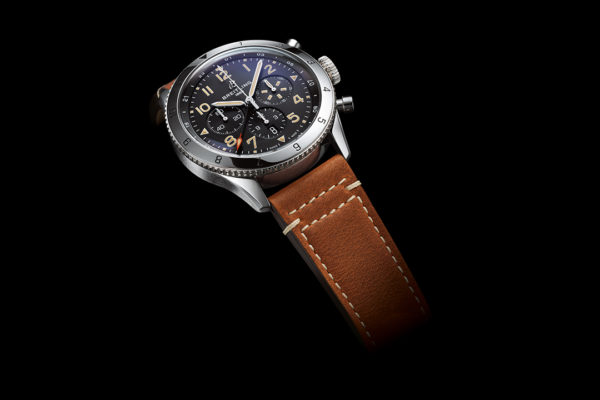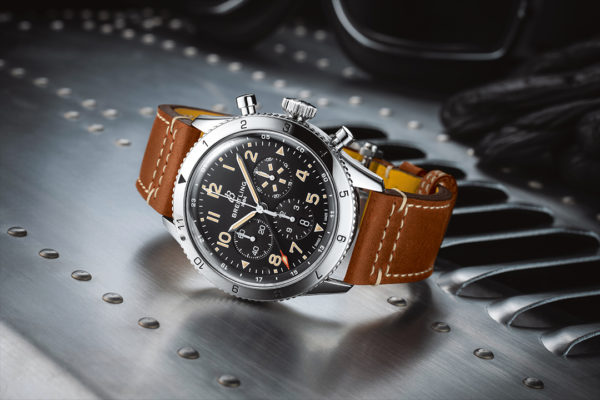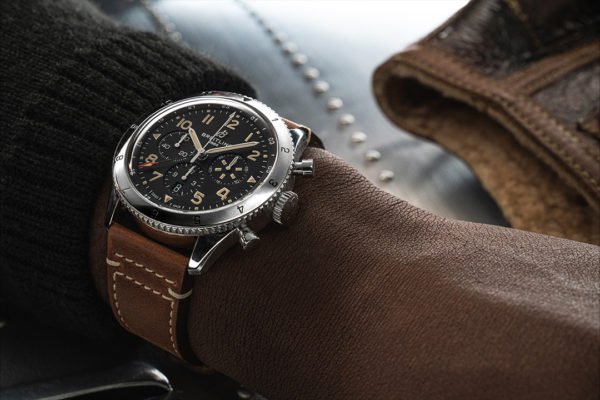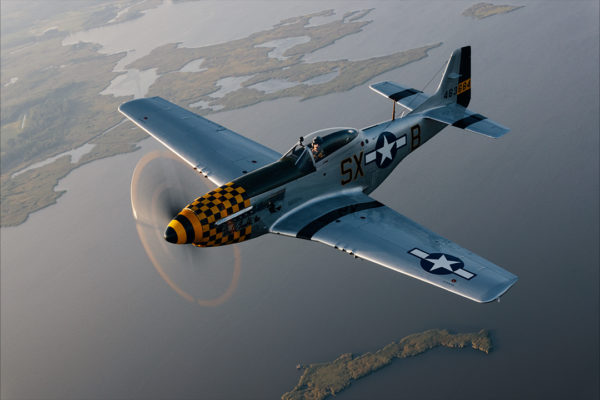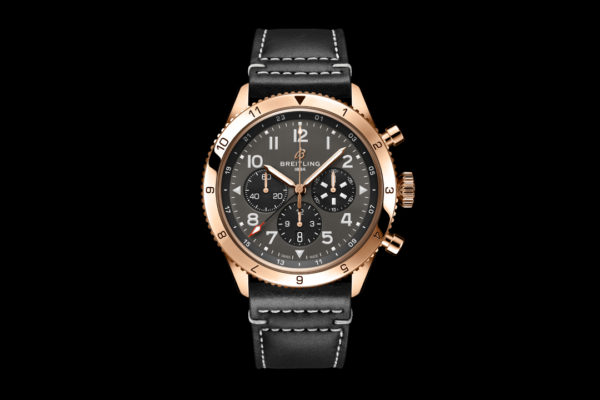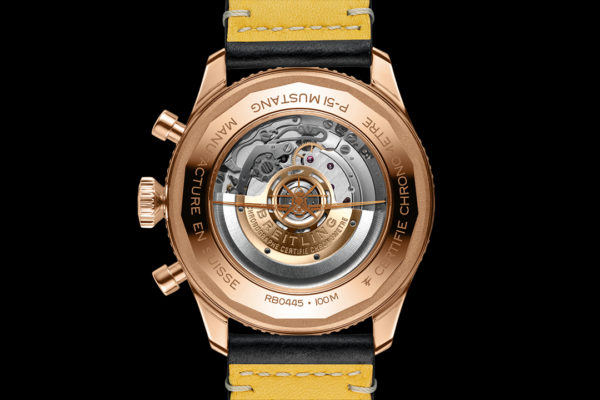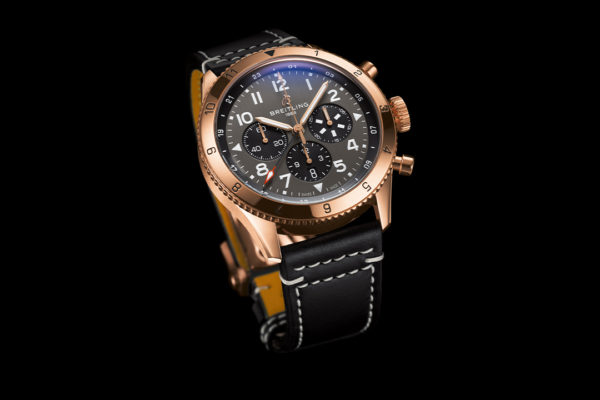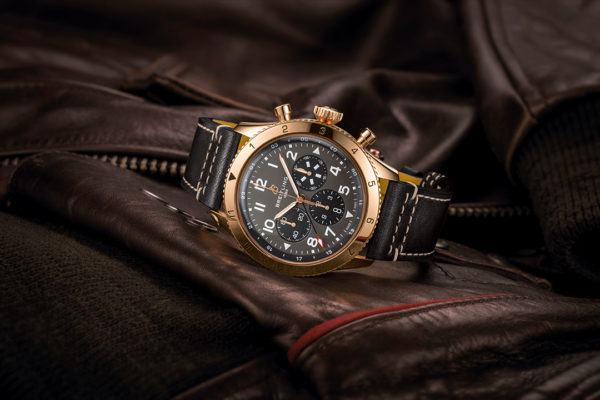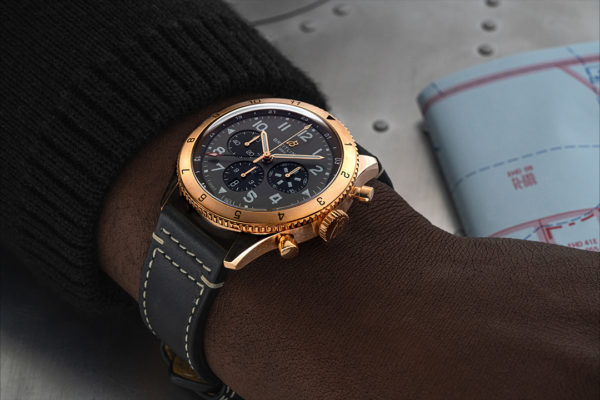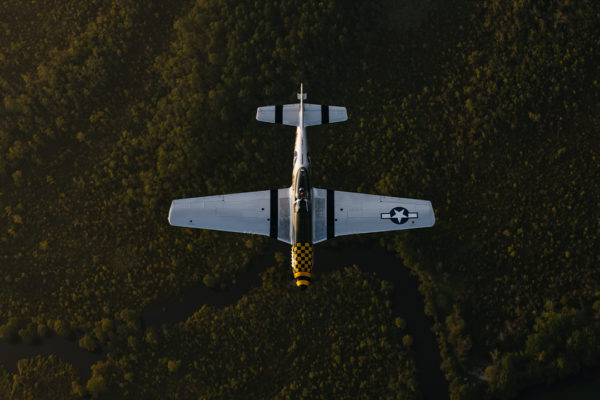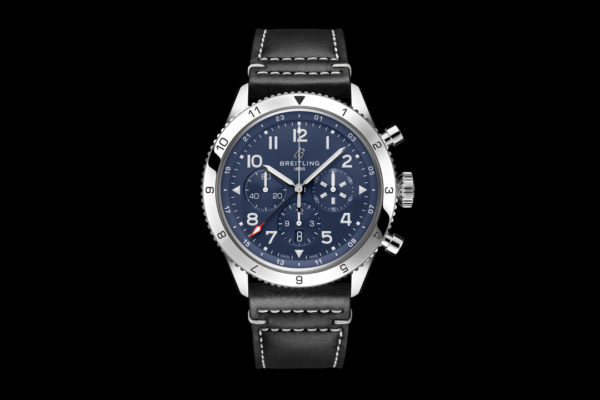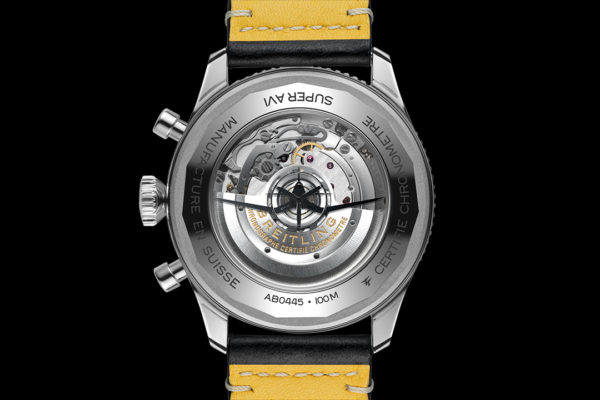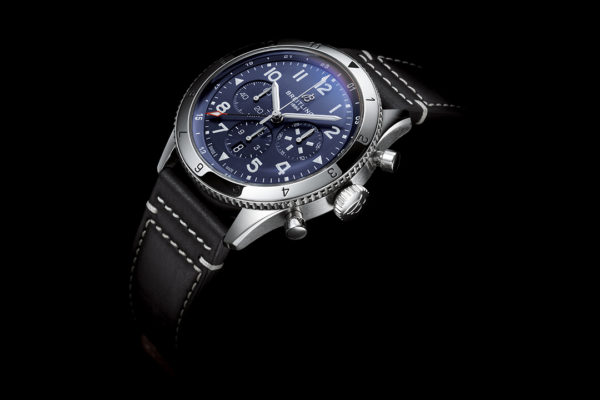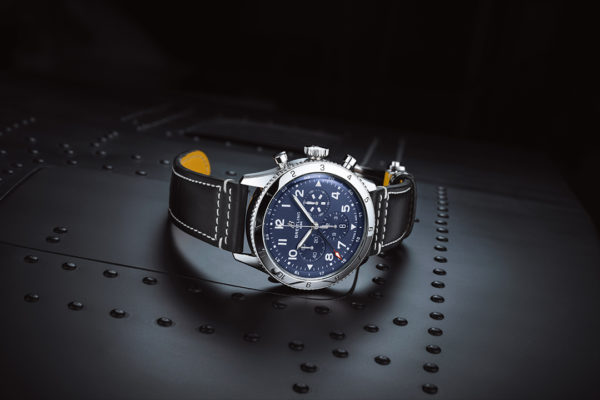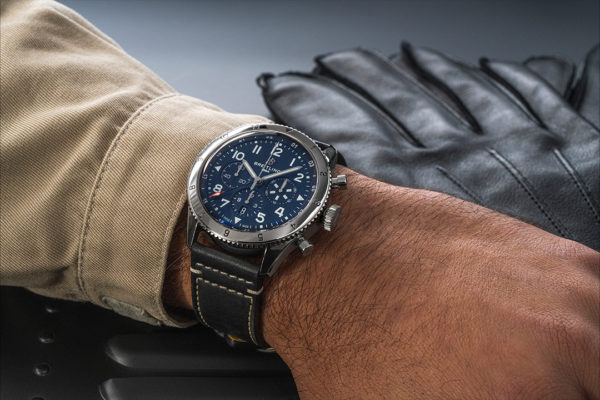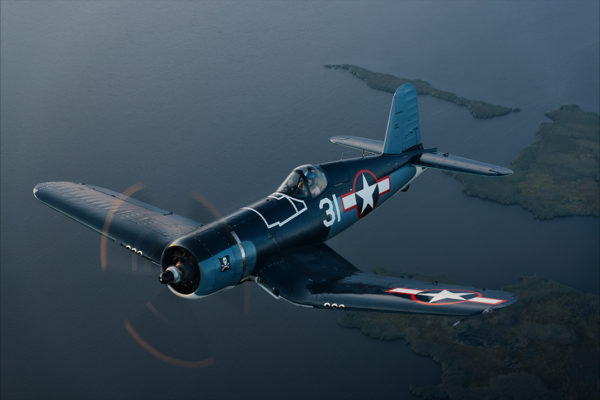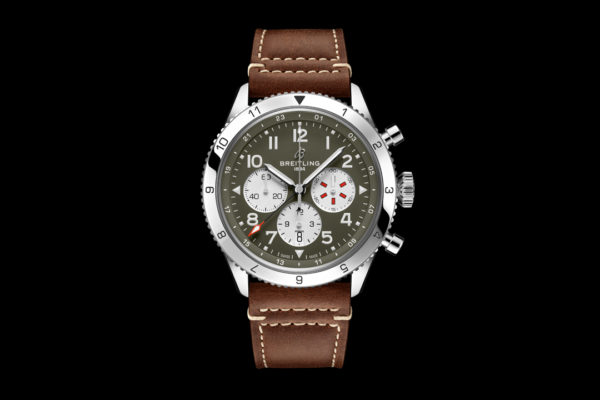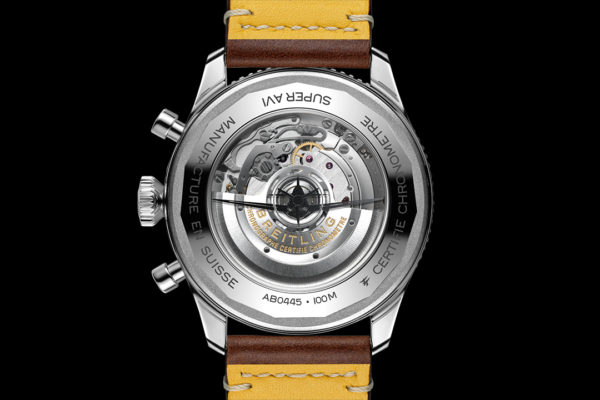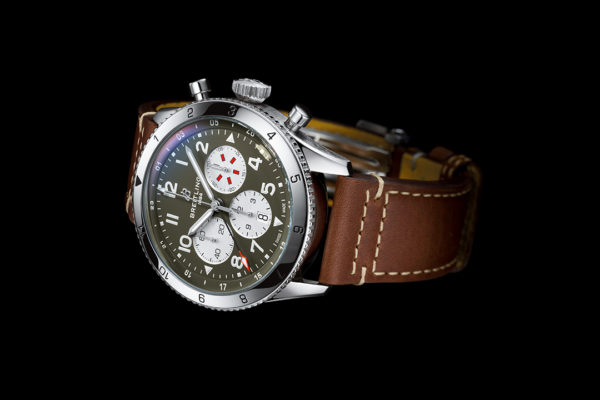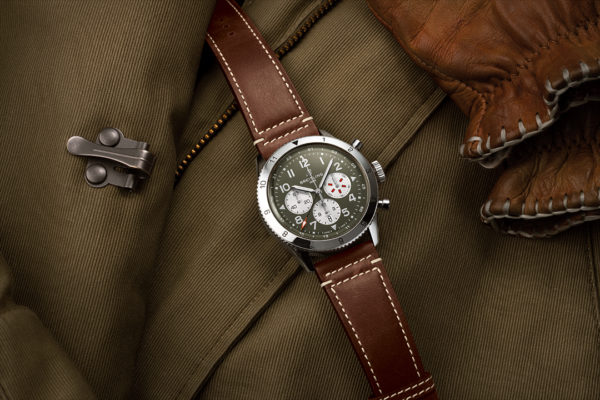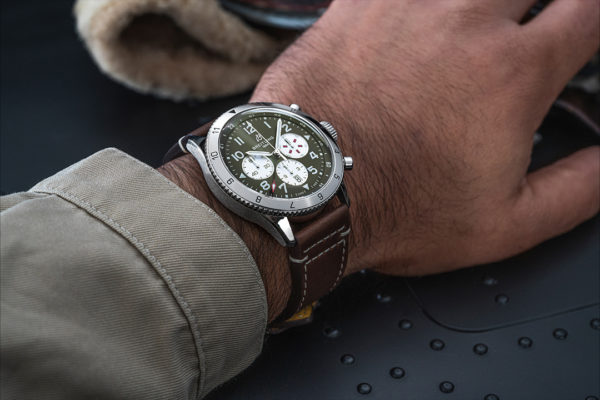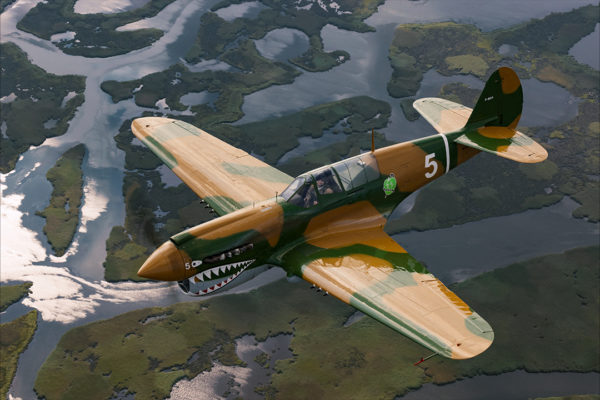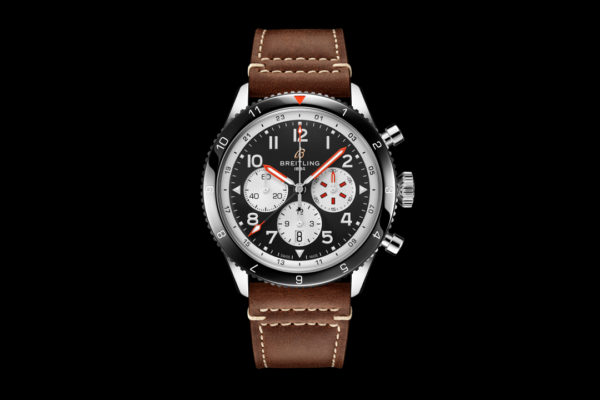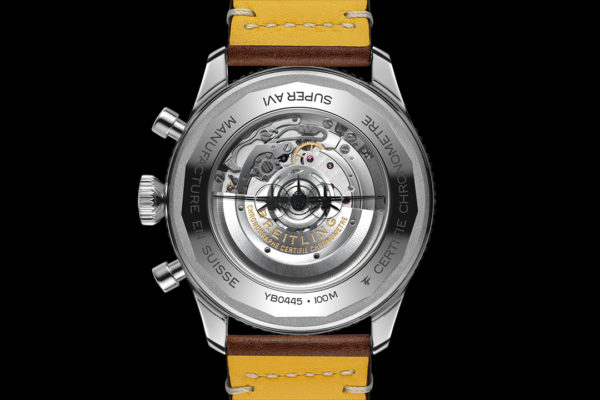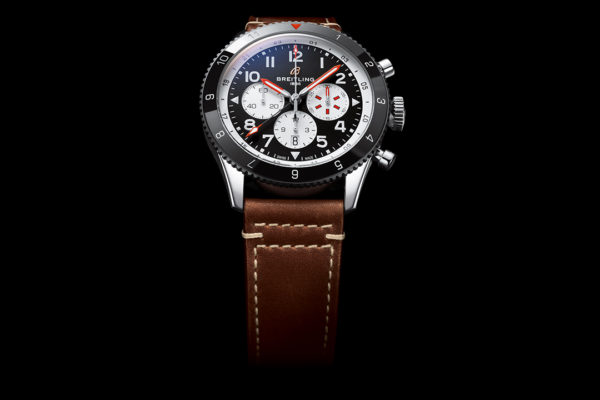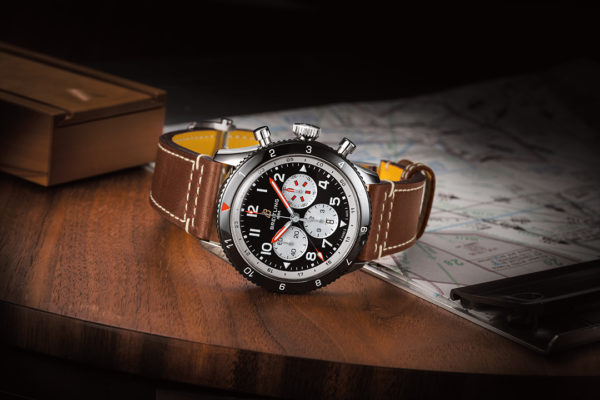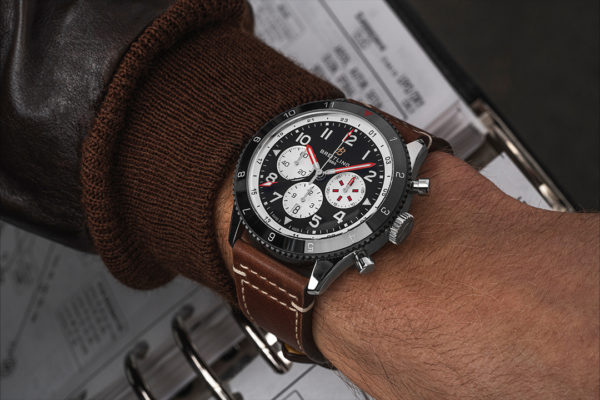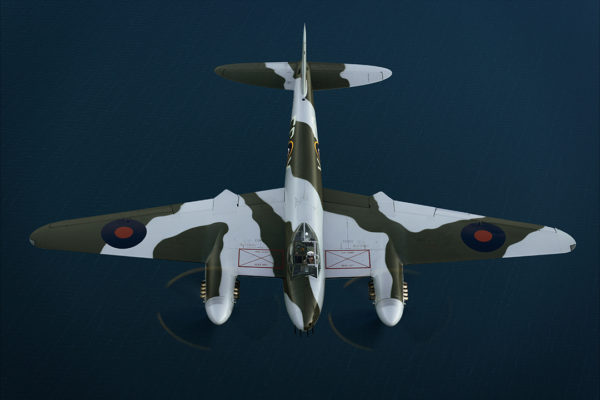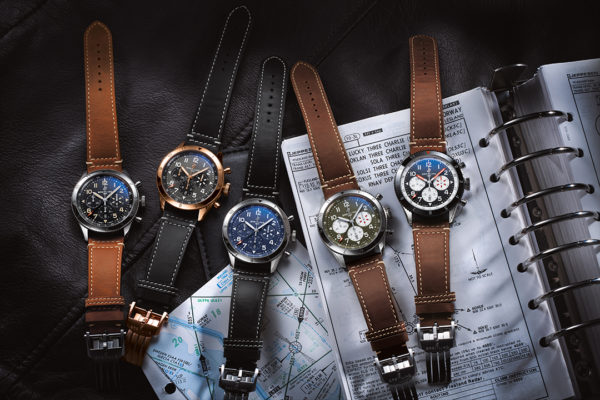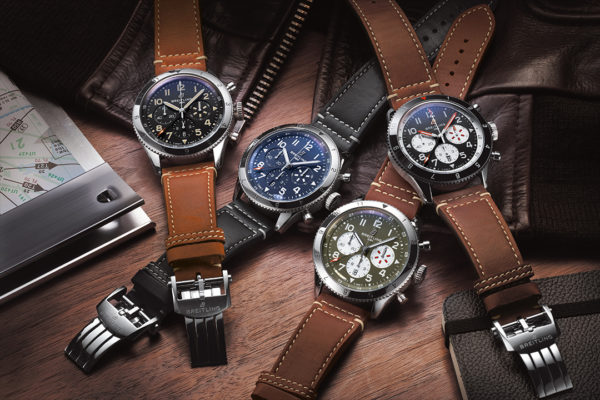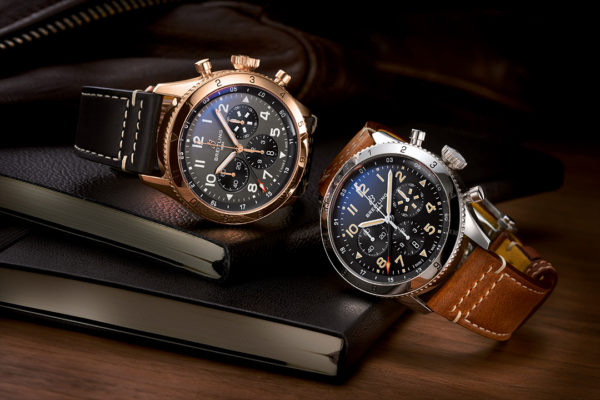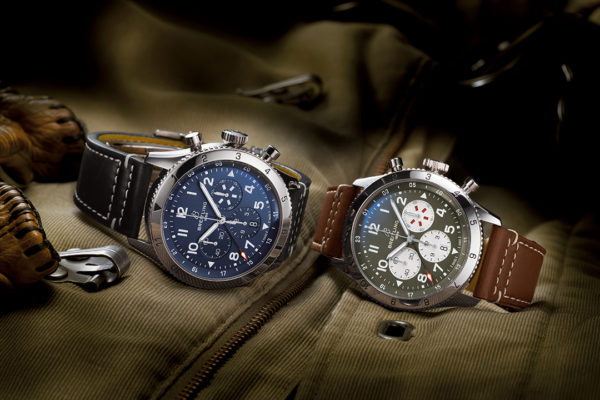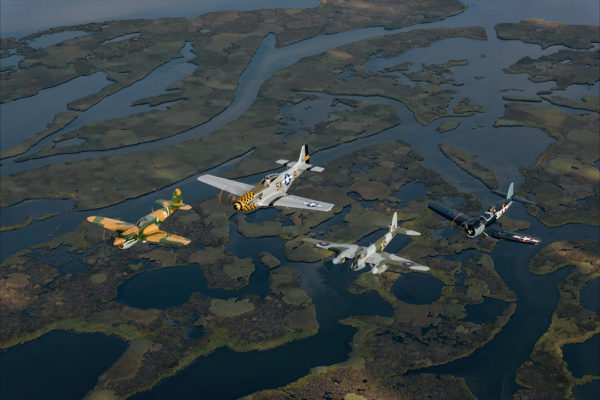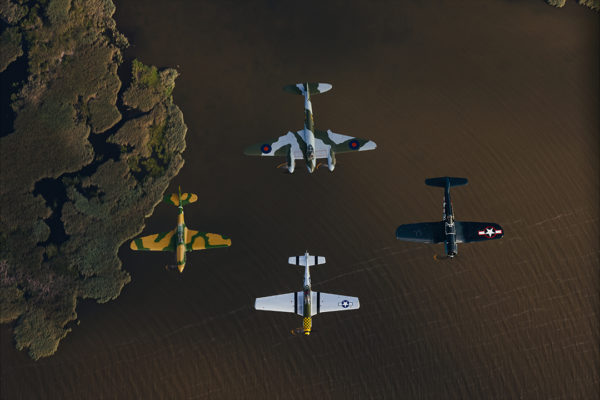Super AVI, the newest watch series from Breitling, is a celebration of aviation history with designs inspired by the original 1953 “Co-Pilot” Ref. 765 AVI aviator’s watch and four legendary planes: the North American Aviation P-51 Mustang, the Vought F4U Corsair, the Curtiss P-40 Warhawk, and the de Havilland Mosquito.
“This collection embodies that sense of nostalgia for the early days of aviation when pilots relied on their watches as onboard tools,” says Breitling CEO Georges Kern. “But you don’t have to be a pilot or vintage-aircraft buff to appreciate the exceptional craftsmanship and rugged design.”
In the 1930s, Breitling’s Huit Aviation department made its name inventing precision cockpit clocks for the then nascent field of aeronautics. Two decades later, in 1953, Breitling introduced the world to yet another novel flight instrument, this time in wearable form. The Ref. 765 AVI pilot’s watch was an instant hit and a first of its kind that inspired many others. Beloved by aviators, it quickly became known as the “Co-Pilot.” In 2020, Breitling also launched the AVI Ref. 765 1953 Re-Edition, a carefully researched and crafted re-edition honoring this classic chronograph’s legacy.
That pioneering watch is the inspiration for today’s Super AVI, the debut series in Breitling’s Classic AVI collection. Its launch marks nearly a century of aviation timepieces from a brand that has shared some of the field’s finest moments. From brave first takeoffs to the birth of commercial air travel, Breitling’s history is inseparable from that of flight.
DRAWN FROM VINTAGE AVIATION AESTHETIC
The collection comes in five unique versions honoring four powerful and memorable aircraft,
whose filigree silhouettes adorn the watches’ sapphire case backs.
– The Super AVI P-51 Mustang pays homage to the best all-around fighter plane of its
era in two distinct versions: a stainless-steel case with a black dial and gold-brown
leather strap, and an 18 k red gold version with an anthracite dial and a black leather
strap exclusive to Breitling boutiques and Breitling.com.
– The Super AVI Tribute to Vought F4U Corsair features a blue dial, tone-on-tone
chronograph counters, and a black leather strap that take their design cues from the
characteristic livery of the record-breaking naval aircraft.
– The Super AVI Curtiss Warhawk, with its military-green dial, white contrasting
chronograph counters, and red accents, plays on its namesake’s famous shark-mouth
nose art that gave the plane its unmistakable identity.
– The Super AVI Mosquito features a combination polished and satin-brushed black
ceramic bezel and a black dial with white contrasting chronograph counters. Its red
and orange elements recall the roundels and markings found on the versatile plane,
dubbed the “Wooden Wonder”.
“Our watchmaking DNA is what dominates here, while the interpretations of the four aircraft give the series its emotion and bold graphic appeal. Taken together, these elements evoke the spirit of early flight,” says Breitling Creative Director Sylvain Berneron. “We can’t forget that Breitling pioneered aviation tool watches like the Ref. 765 AVI. That heritage is so strong, we had to not only keep it intact, but rewrite it for the 21st century.”
The Super AVI’s distinctive design includes large, highly legible Arabic numerals on the dial and bezel. Its sturdy case measures 46 mm, and the oversized crown sits at 3 o’clock. Knurled bezels provide optimal grip, and top-stitched calfskin straps give a nod to the seams found on leather flight gear of the era.
Pilots and other travelers will appreciate the ability to track a second time zone using the 24-hour marking on the inner bezel and the red-tipped GMT hand. The engine of the Super AVI is the COSC-certified Breitling Manufacture Caliber B04 movement, which provides approximately 70 hours of power reserve.
While the Super AVI reminds us of the days before digital timekeepers when pilots’ watches were their trusted flight instruments, its robust aesthetic and enduring precision are what make the Super AVI just as relevant today.
| A Quartet of Aviation Game Changers
When the P-51 Mustang was built in a mere 120 days, even its developer, North American Aviation, didn’t anticipate what a powerhouse it had on its hands. The P 51’s low-drag wings and engine cooling system – considered experimental when the single-seat fighter first took off in 1940 – gave it unprecedented speed and range. The addition of a Merlin engine expanded the plane’s performance to high altitudes, making it the best all-purpose fighter of its time. As a WWII naval aircraft, the Vought F4U Corsair had to make tricky takeoffs and landings from carriers and remote landing strips. Speed and lift were of the essence, and the Corsair came through with flying colors, becoming the first single-engine fighter to crack the 400 mph (640 km/h) mark, while also providing an exceptional rate of climb. Its “bent-wing” design, oversized propeller, and signature blue livery make it an emblem of aviation history. Conceived as a pursuit aircraft, the Curtiss P-40 Warhawk first flew in 1938 and quickly proved itself as a master of agility. It wasn’t just the plane’s capacity for pulling jaw-dropping turns that gave it an in-flight edge, its robust structure meant it could tolerate harsh weather conditions and even severe combat damage. The Warhawk’s defiant shark-mouth nose art sealed its reputation as the rebel of the skies. In an era when aluminum and steel shortages were common, the engineers behind the de Havilland Mosquito made use of a still plentiful material: wood. The “Wooden Wonder” caused shock waves when it outperformed its metal contemporaries to become one of the fastest planes built between 1940 and 1950. Its superior maneuverability allowed it to multitask in roles as far-ranging as light bomber, night fighter, transport and photographic reconnaissance aircraft. |
